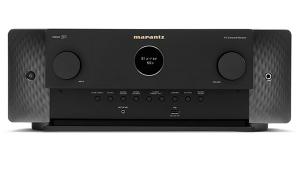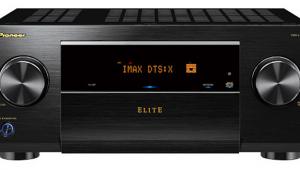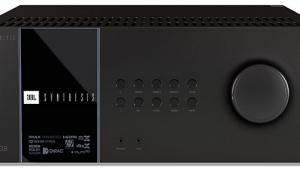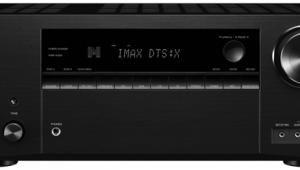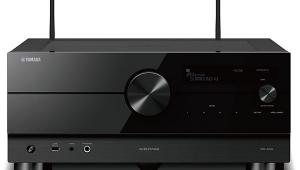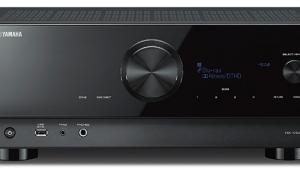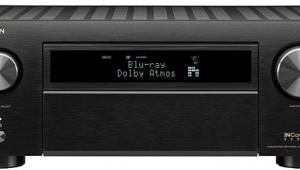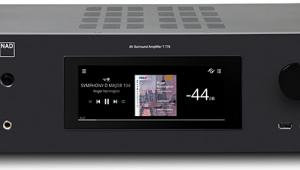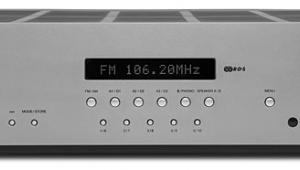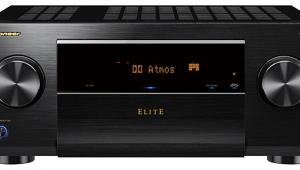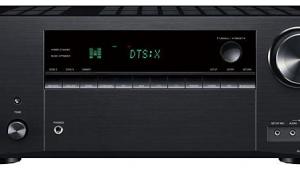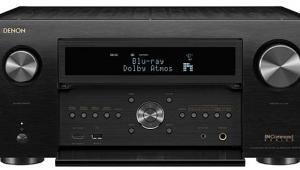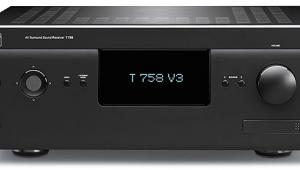Pioneer Elite SC-71 AV Receiver Page 2

The Package (Blu-ray, Dolby TrueHD) pits action man Steve Austin against action man Dolph Lundgren. Result: action. An especially balletic and orgiastic gunfight early in the movie established the receiver’s dynamic credentials. MCACC focused the soundfield, especially in the front of the room, without causing any gross timbral changes—unlike most other room-correction systems, which in my experience generally make the sound brighter. Not surprisingly, bass also benefited, giving the soundtrack’s occasional low synth tones good weight with clean tone and no obvious bloat.
House of Cards (streaming, Dolby Digital Plus) dines out on dialogue, and the Pioneer adroitly handled both the appetizers (low-voiced conspiratorial scenes) and the main courses (negotiations, tirades, speeches). The sonorous opening theme, with its lonely trumpet soaring over the majestic District of Columbia cityscape, sounds gorgeous and powerful even through my little Audioengine 2 TV speakers—but played through this superb amp and my reference speakers, its reverberant beauty took on a life of its own, oddly complementing the cynical drama with a sense of wonder. Season 2 became available for streaming on February 14.
The 2013 DTS Demo Disc (Blu-ray) is a DTS-HD Master Audio feast. The movie section kicks off with the flaming-forest scene from The Hunger Games. The Pioneer easily filled the soundfield with all-channel upper- and midbass roar. Scenes from Snow White & the Huntsman, Prometheus, The Cave, and Harry Potter and the Deathly Hallows: Part 2 showed off the receiver’s ability to deal with complex directional information. Singin’ in the Rain, with Gene Kelly performing the title song and dance, had the Pioneer changing gears for a vintage warm analog feel—not exactly what you’d expect from a switching amp. The DTS disc’s music section leans heavily on live recordings. The one that popped this time was a version of Queen’s “Another One Bites the Dust,” with the D3 amp doing full justice to its monster beat and syncopated bass line.
Big MCACC Attack
Symphonic music is always the canary in the coalmine. And so a CD of Beethoven’s Symphonies Nos. 4 and 7, with Joshua Bell conducting the Academy of St. Martin in the Fields, was the demo least flattering to MCACC. Here’s where the blandness and opacity I referred to earlier finally became noticeable. When I turned off the room correction, the presence region gained detail and the midbass thickened pleasingly—and these improvements were helpful enough to offset a small decline in imaging. When I turned off the separately adjustable phase control (a Pioneer exclusive), there was a faint coarsening of tone, but it wasn’t a major change. Incidentally, it was possible to turn off MCACC and the phase control using dedicated remote buttons while keeping bass management. With most receivers, the easiest way to defeat room correction is to use the pure direct mode, but that usually shuts down the subwoofer. With a Pioneer receiver, you can kill the EQ and keep the sub.

Having determined that the D3 amp sounded great without room correction, I decided to let it fly solo for the high-rez download demos using FLAC files from HDtracks. In Nick Drake’s Bryter Layter (96/24), the familiar deep, breathy voice imaged into a glowing, almost physical presence without manipulation. I own this recording on LP and CD and know the lush textures of Joe Boyd’s loving production well—but with this combination of high-rez content and receiver, I’ve never heard it so unveiled, its layers so well balanced and placed, with the rich voice soaring over them. This is the only Drake album where the acoustic guitar is sometimes in danger of drowning amid busy piano and other parts. Not this time: The guitar was well articulated and rhythmically taut, and it kept its head above the surface, as always the ideal counterpoint to the haunting voice.
Likewise, I’ve got the Dave Brubeck Quartet’s Take Five on ‘wax’ and shiny discs and have heard it innumerable times at trade shows. Via D3, the high-rez version (176.4/24) offers more of the delicate harmonic detail in the piano, a well-integrated tap-and-shimmer on the cymbals, and (with bass management but no EQ) good weight for the string bass as well as the drum solo’s mighty echoing thunks. In my review of the SC-68—my first shot at a D3 receiver—I felt that the top end was marginally less refined than the bottom. But having spent more time with the technology, and having access to high-rez downloads, I’m letting go of those doubts. This is a great-sounding receiver by any criterion.
While Pioneer isn’t the only AVR manufacturer to replace Class AB amps with Class D, it’s the only one doing so on a large scale, with all of its $1,000-plus models now using the new technology. And the results are excellent. The more of these products I hear, the better I like their assured dynamics and what I now perceive as their top-to-bottom clarity. Give the Elite SC-71 a listen and hear the D3 difference for yourself.
Audio editor Mark Fleischmann is also the author of the annually updated book Practical Home Theater (quietriverpress.com).
